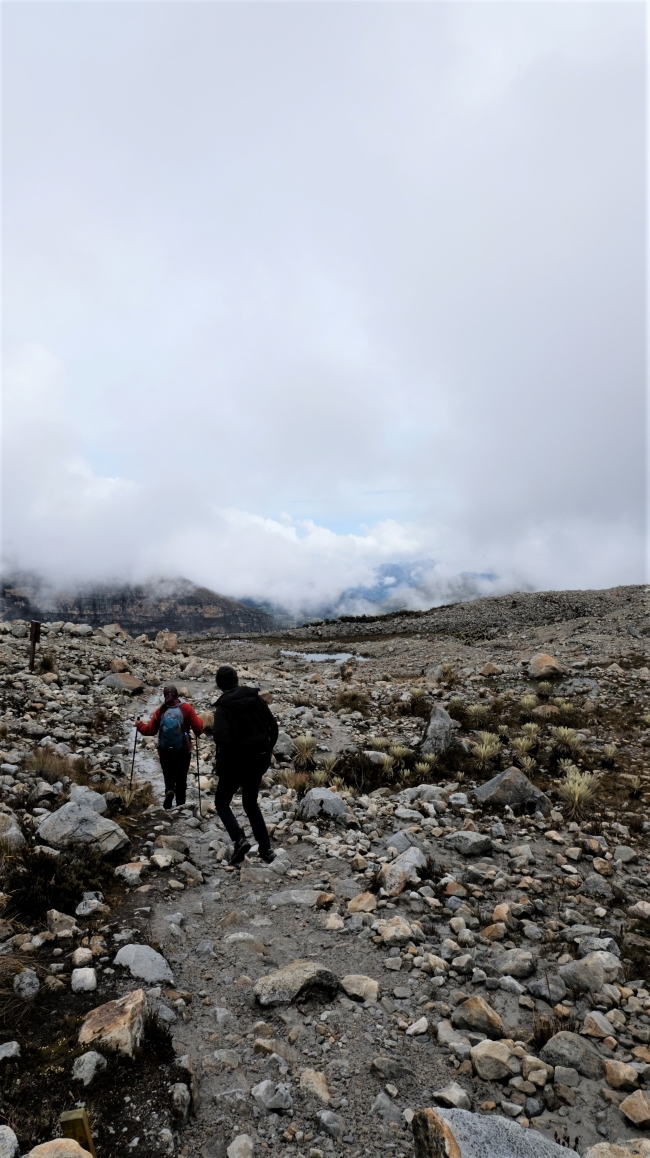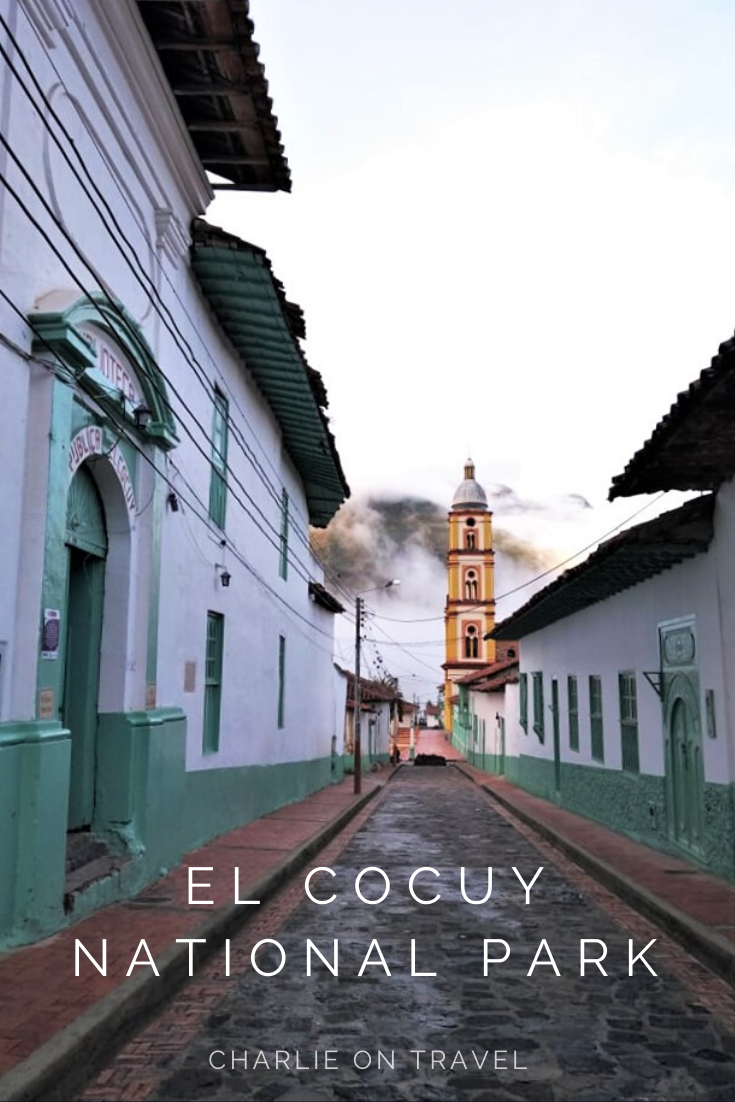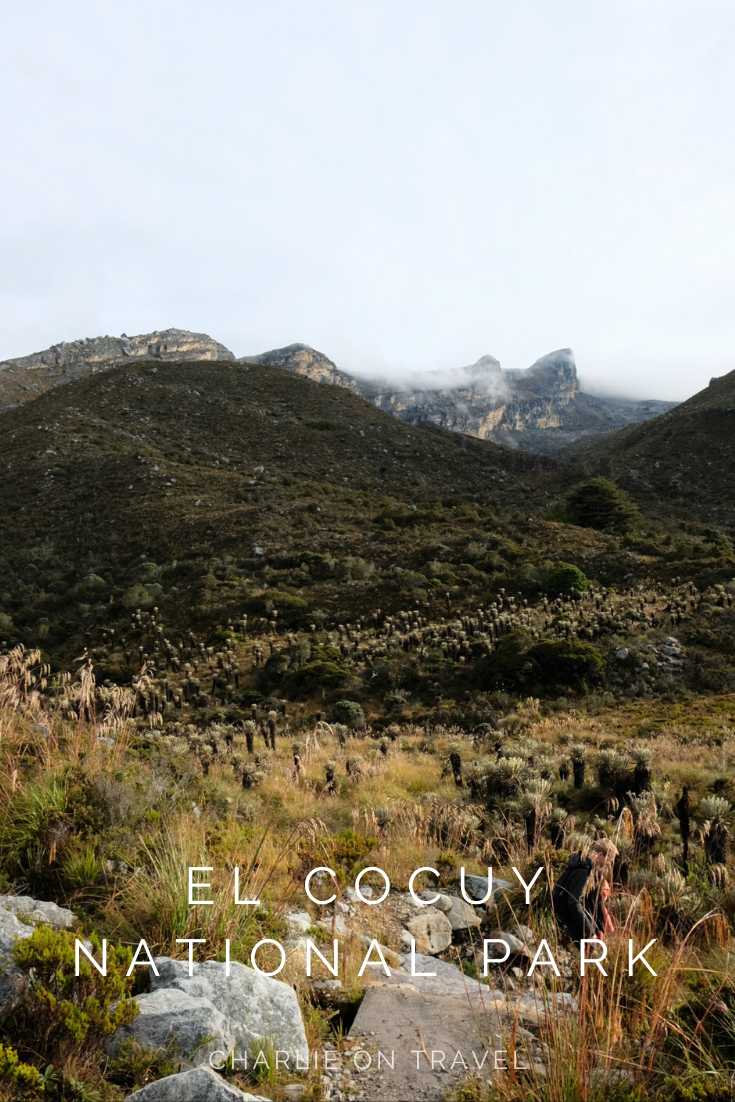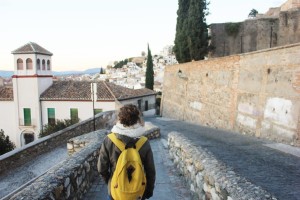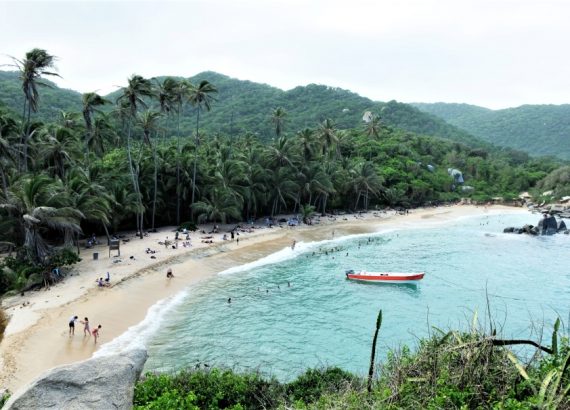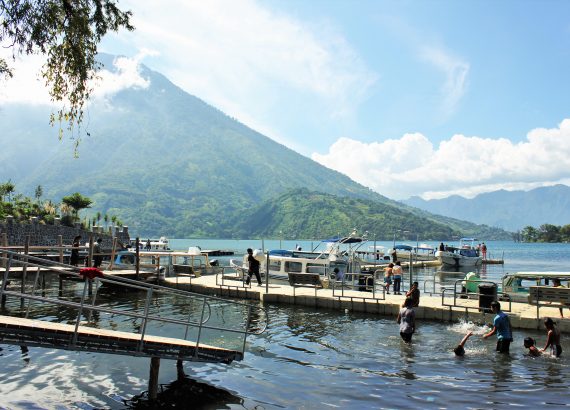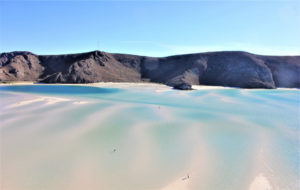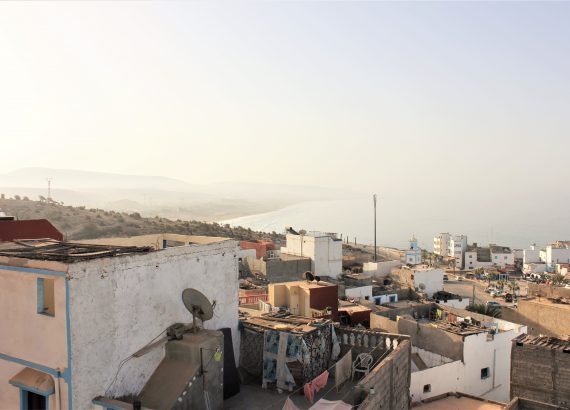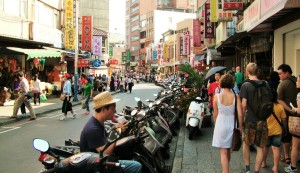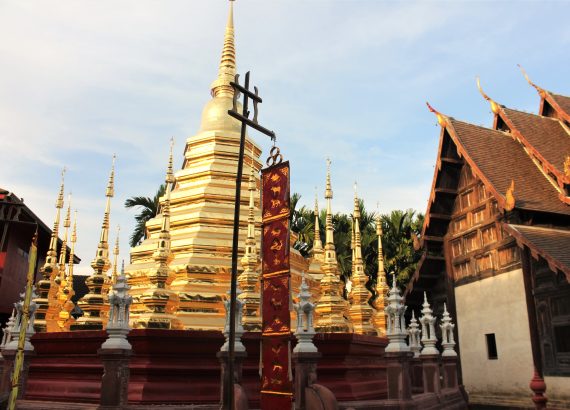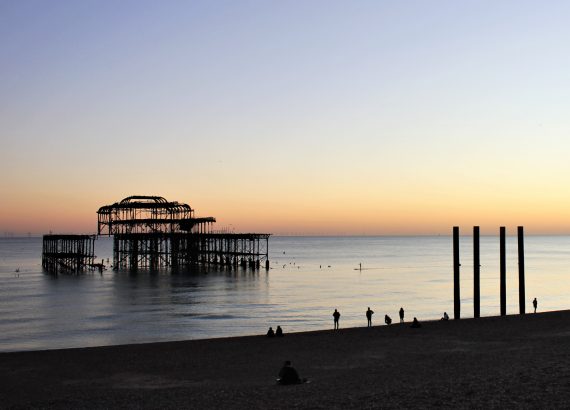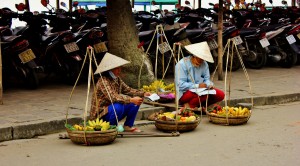El Cocuy National Park Hiking Guide
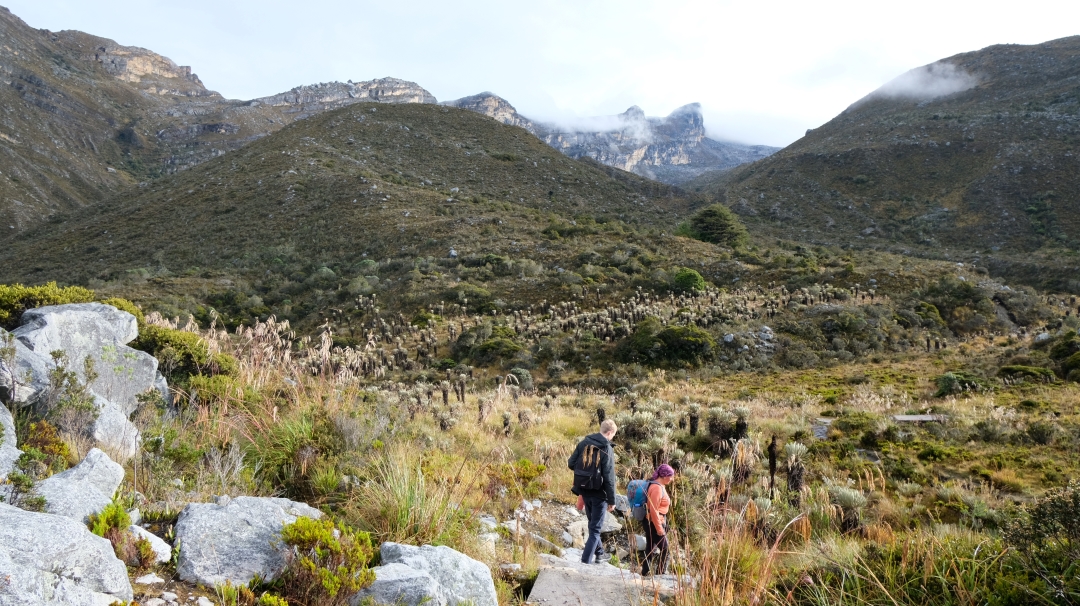
Adventurous souls can see can see glaciers, the mighty condor and the other-worldly fraijones in El Cocuy National Park. Snow-capped peaks and wide valleys make the hiking in this Andes mountain range spectacular.
As the multi-day hikes are closed, most tourists stay in El Cocuy town and do one-day trips into El Cocuy National Park. We arranged our trip to the National Park ourselves, but it wasn’t that easy. It took us more or less a whole morning and would’ve been very difficult if we didn’t speak basic Spanish.
Unlike Salento and the Cocora Valley hike, the town of El Cocuy and the treks in El Cocuy National Park are much less touristy. Make your way this far off-of-the-beaten-path in Colombia, and most of the tourists are the Colombians themselves. Whilst this means you get a much more authentic experience and a spectacular hike without the crowds, it also means organising treks is harder and more expensive.
El Cocuy National Park Itinerary
We spent three days in El Cocuy, with two days either side for getting in and out. It’s necessary to dedicate a whole day either side for travelling because El Cocuy is far away from all the main cities and buses can take 10+ hours to reach El Cocuy. It’s possible to take a night bus from Bogota, but be aware the bus conditions aren’t conducive to a good night’s sleep. Here’s what our itinerary looked like:
- Day 1: Arrive in El Cocuy
- Day 2: Organise our hike
- Day 3: We missed a day of hiking as the park was at max capacity! (not part of the plan)
- Day 4: Hike to La Laguna Grande in El Cocuy National Park
- Day 5: Return to Villa de Leyva via Tunja
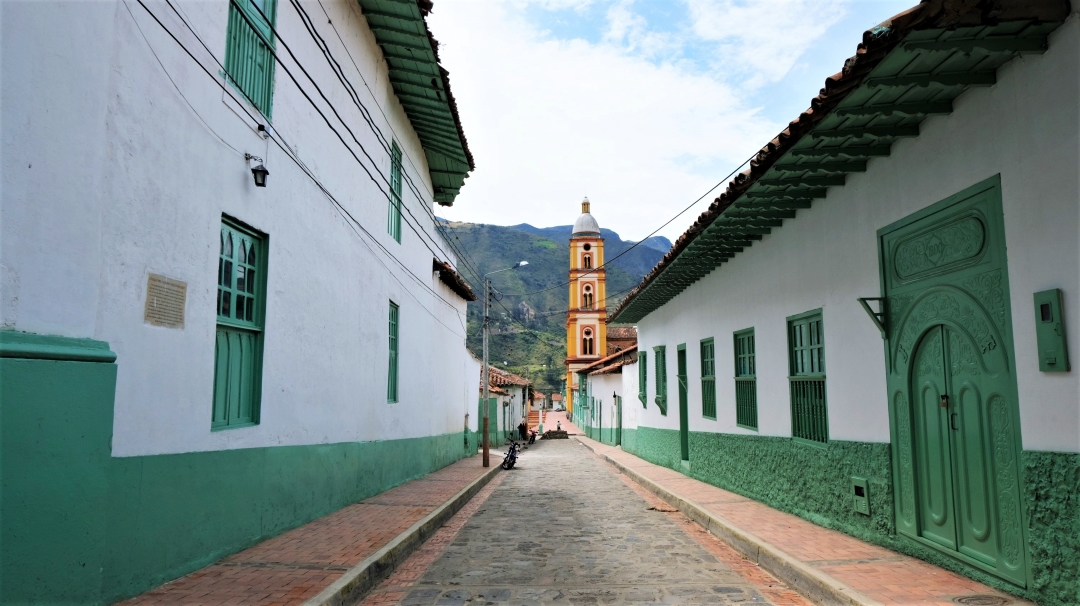
How to Hike in El Cocuy
1. Decide which hike you want to do
There are three different hiking routes open to tourists in El Cocuy National Park:
- La Laguna Grande
- Ritacuba
- El Pulpito del Diablo
We decided to hike La Laguna Grande because this route takes you right up to the glaciers. It also offers a good view of El Pulipito del Diablo and El Pan de Azucar, if you are lucky with the weather.
La Laguna Grande is also supposed to be the easiest hike. It took us 4 hours to reach the lake, and we were the first group there. It’s not easy by any stretch of the imagination and altitude sickness can become a problem as the lake is at 4,600 metres above sea level. It’s another 3 to 4 hours on the way back.
The other hikes are more difficult, not because they are longer but because they are steeper. Our guide described El Pulipito del Diablo as very pretty, but for strong hikers only.

2. Find a guide to take you into the National Park
There are three registered guides that can speak (some) English. A guide for the day costs COP $150,000 per group. There’s a complete list of registered guides in the National Park Office in El Cocuy. You’ll need to call or WhatsApp the guide to check they’re free on the date you want to hike. We did this directly from the National Park Office, but I’d recommend doing it beforehand if you can.
- Silva Verlandia Martha Lucia (3115117363). We hiked with Martha and can highly recommend her.
- Ruiz Millan Sergio (3112628385)
- Suarez Suarez Julio Enrique (3232813827)
3. Arrange your transport to and from the park
There are two options for getting to and from the park. You can ask your guide to arrange a private car for the day, which will cost COP $180,000. You can split the cost between four passengers. On Martha’s advice, we went with this option and she kindly arranged two other passengers to join us and split the cost.
The more adventurous and also budget option is taking the milk cart (lecheros). But there is one major downside. The milk cart leaves town at 6:30AM and returns at 3PM. Most of the hikes are 9 hours hiking time, and taking la lechero means you won’t have enough time to finish the hike. Our private transport left El Cocuy at 4:40AM and we finished our hike at 2:30PM. The milk cart doesn’t arrive in El Cocuy park until 8:30AM, which doesn’t give you enough time to reach La Laguna Grande if you need to be back on the milk cart by 3PM.
If budget is more important, you might opt to wait for the milk truck, but it’s important to consider that hiking in El Cocuy is in itself expensive (see our section on how much it costs). If you’ve invested the time and money to get to El Cocuy and do the hike, you’re probably going to want to finish it and your only real option then is to take private transport to the National Park.
4. Buy your insurance (mandatory)
You must buy insurance to enter the park. You can do this from a small building around the corner from the National Park Office. The price is COP $7000 per person. You must have a guide before you get your insurance. The address is Carrera 5, 5.75, though it won’t come up on Google Maps. Look for a poster which says “póliza accidentes personales.”
5. Register with the National Park Office
Lastly, you must register with the National Park Office (Officina Parque Nacional El Cocuy). This costs COP $71,000 per person and can only be done once you have your guide and insurance arranged. You must watch an induction video at the office before you can enter the park. The video is in Spanish, but you won’t be quizzed on anything. Note that sometimes the front door is closed and you must enter the office from a side door!
Do I Need to Book my El Cocuy Trek in Advance?
You should book in advance if you are hiking in high season (December and January) or on a Colombian holiday. Colombia has frequent public holidays, so double check the dates. You should also book in advance if you are on a tight schedule. The park has a limit on the number of people who can visit per day and is a popular destination with people from Bogota on the holidays.
The weather is supposedly drier in December and January, but there’s no guarantee of good weather in the mountains. We hiked during November and the weather was cloudy and both cold and warm. Rain started daily around 4PM.
How Much Does it Cost to Hike in El Cocuy?
Here’s how much it costs to hike in El Cocuy:
- Insurance: COP $7,000 per person
- Guide: COP $150,000 per group
- Entrance: COP $71,000 per person
- Transport via private car: COP $180,000 per car
- Total: COP $408,000
The private transport price and the guide price is per group, so if you can find a group to go with you can split the cost. However, it’s worth noting that guides are keen to take smaller groups both because it means they can walk at the right pace for the group and you tend to move faster in smaller groups, but also because this means work for more local guides.
What to Wear in El Cocuy National Park?
Be prepared for all weathers in El Cocuy National Park. It can be very hot at midday at lower altitudes, but then dip to zero degrees as you get higher. Rainstorms are also possible at a moment’s notice, so waterproof gear is essential. You’ll definitely need to pack the following:
- Hiking shoes (make sure they’re comfortable and waterproof)
- Light sweater or fleece
- Waterproof jacket
- Hat
- Gloves
- Water (bring a reusable water bottle as you can fill up in rivers and streams during the hike)
- Sunscreen
- Lunch and snacks (you can’t buy anything at the National Park, so bring everything you need to eat with you)
Heat can be as much as a problem as the cold. Our guide brought two hats — a woolly one and a cap for the shade.
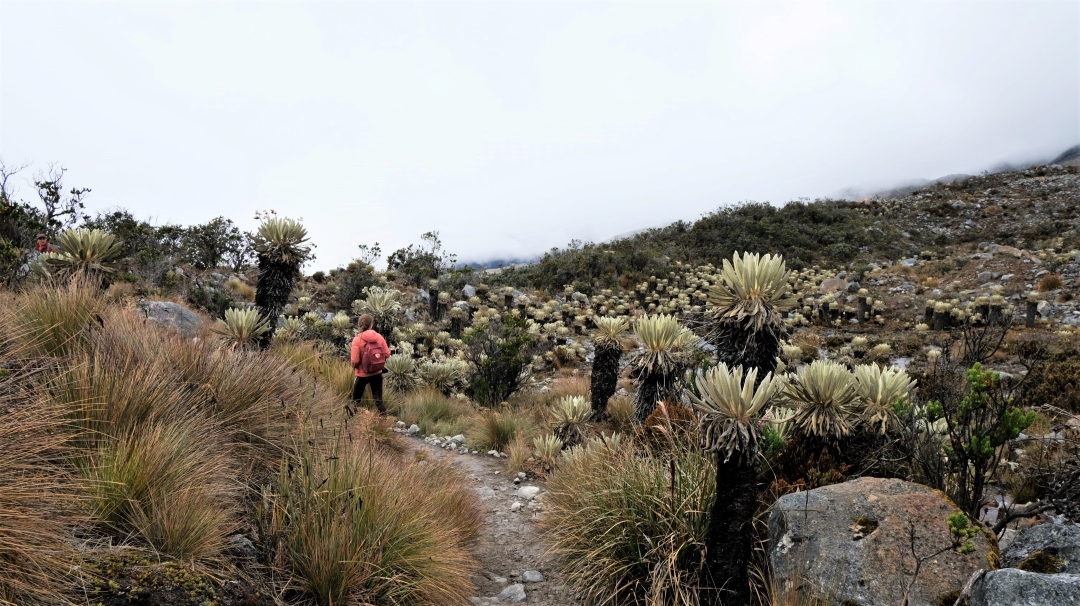
Hiking La Laguna Grande in El Cocuy National Park
We arrived at the park entrance at 6AM after hopping into a jeep at 4:40AM, fuelled by coffee. It’s an hour and a half ride in the dark up to the park entrance, along gravelly roads. After a quick check of the paperwork by a guy at a small hut, we parked up at another small hut, pulled our hats on and jumped out of the jeep. There’s nothing here except some sheltered benches and a very basic toilet.
It’s muddy from the get-go, but the first part of the hike is quite easy. We reached the beautiful Valle de Faijones by 7AM. You follow the route through a valley of fraijones (“big monks”), these other-worldly plants native to Colombia, Venezuela and Ecuador. Our guide, Martha, explained they play an important role in the ecosystem of the park, storing water in their huge rotund trunks. They release water through their roots to create high-altitude lakes that eventually form rivers.
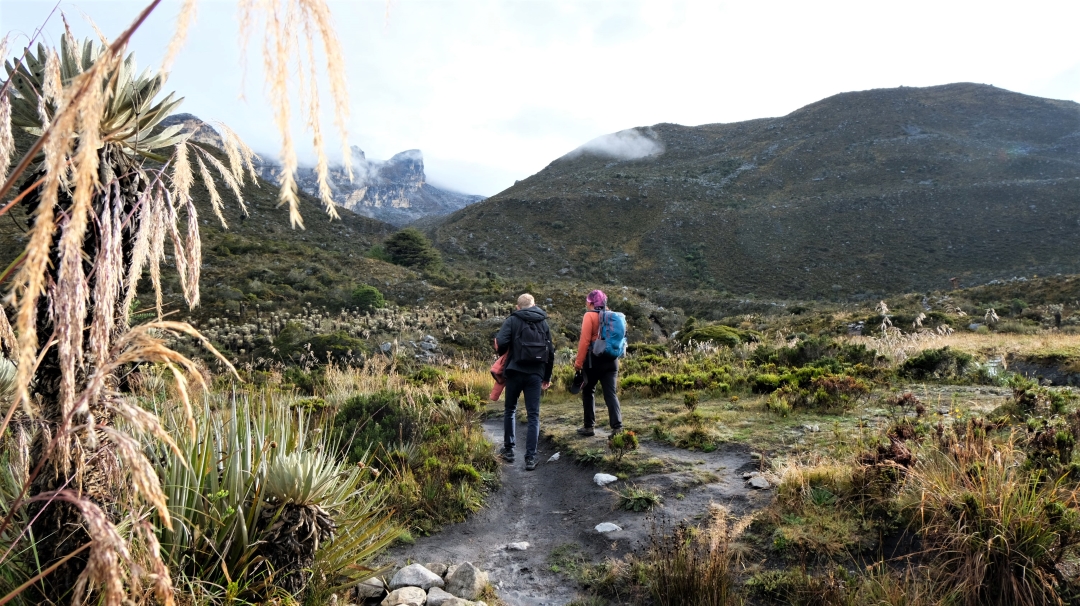
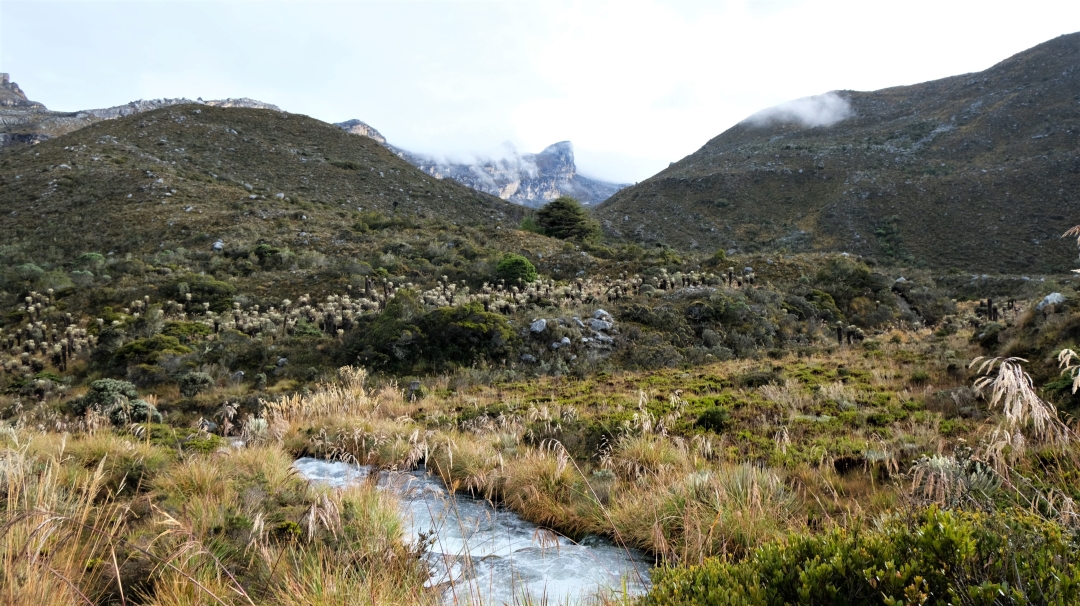

As the hike continues, it starts to get steeper around the Sector de Puma. Fortunately for us, the cloud was so thick at this point that visibility was only around five metres and we didn’t realise just how steep the hike was getting. We kept going on foot in front of the other, but the altitude made it feel as though you could only take half a breath so the going was slow. We tried not to stop, and just slowed our pace for this part of the trek.
By 9AM, we reached the dry lake. The landscape has almost changed completely by this point. We were surrounded by grey rocky outcrops and large boulders. The path starts to level off with the steepest hour of the hike behind you. The clouds were still heavy when we reached this point, but we could feel the mist starting to clear.
By 10AM, we reached La Laguna Grande! To your left, is the ice-capped glacier, ahead is the blue lake and to the right is the magnificent El Pulpito del Diablo. It’s another 500 metres to the edge of the glacier from here. Most of the Colombian hikers walk to the snow line to touch snow for the first time — as this is one of the few places in Colombia where there’s snow.
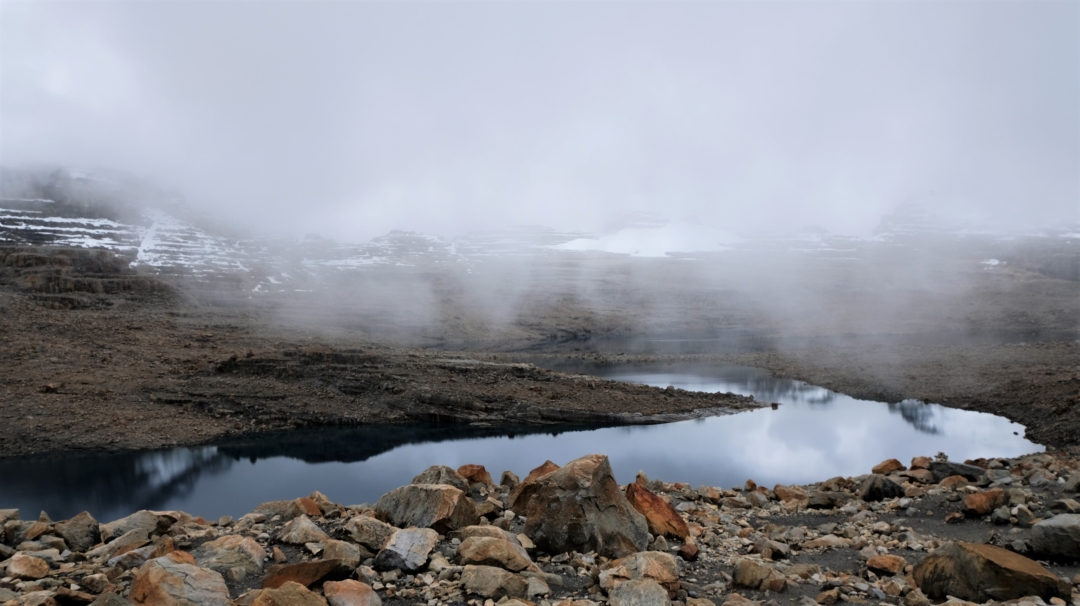

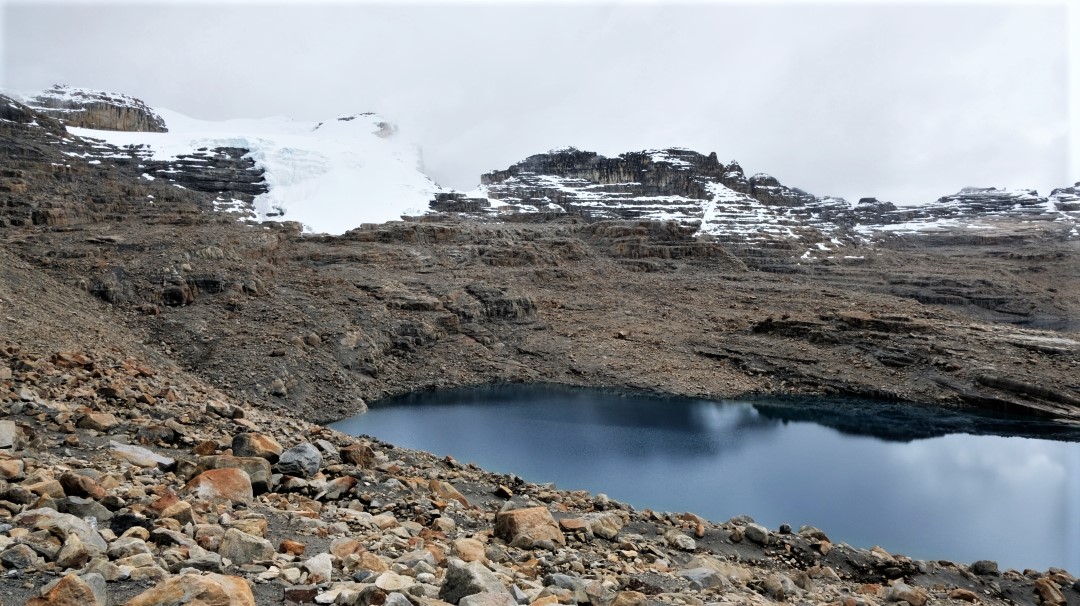
Best Places to Stay in El Cocuy
El Cocuy has a handful of places to stay. Most hotels are also restaurants. Though booking ahead is recommended, we found it cheaper to message our hotel on WhatsApp rather than book online because we didn’t book until the day of our arrival.
Casa Museo la Posada del Molino — Typical hotel with double rooms from COP $60,000 per night. It’s showing its age a little, but there’s wifi widely available and a yellow-and-blue painted courtyard from which you can see the mountains. We stayed here because there’s a decent restaurant which is open until 8PM run by some amazingly welcoming women and at other accommodations it was less obvious how you would actually get food. They also accept card payments, which is not that common in El Cocuy.
Hostel El Caminante — Clean and tidy double rooms from COP $60,000 to $70,000 per night. It’s run by the very helpful Martha, who is also the wonderful guide we mentioned above. She can help you organise your hike and speaks some English. She can also help you arrange an early breakfast on the day of your hike and private transport to the park. This hostel we felt was much prettier and the rooms were larger and brighter than Casa Museo la Posada.
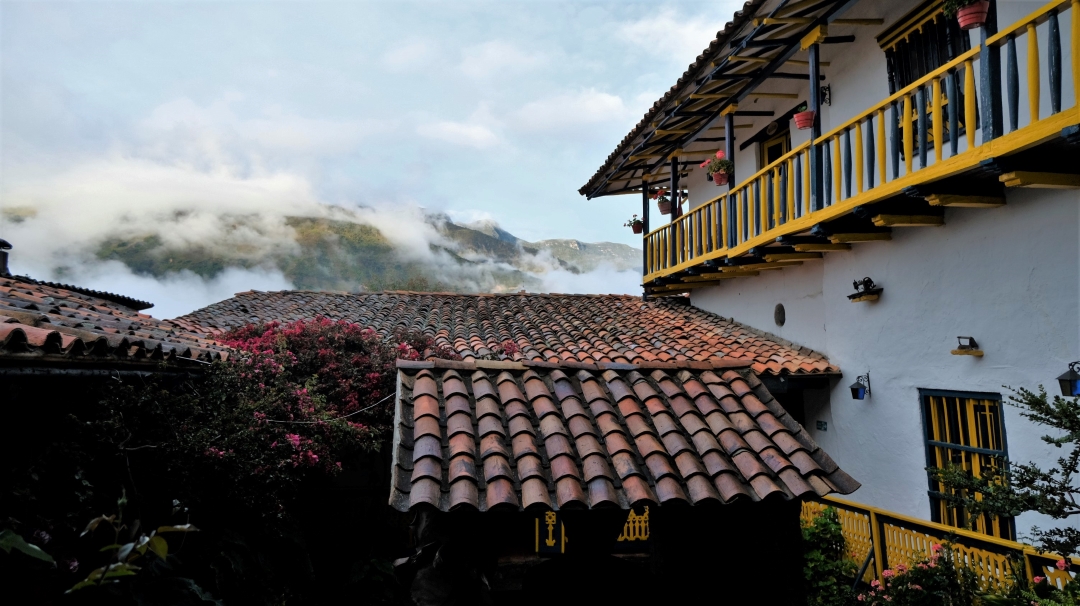
Best Places to Eat in El Cocuy
There are few restaurants in town and even these are often closed, so it’s important that you choose a hotel which also has a restaurant or a kitchen that you can use.
We ate at Casa Museo la Posada del Molino almost every meal. For breakfast, we were served fruit, scrambled eggs, bread and coffee (COP $10,000). For dinner, we had a huge plate of fried eggs, plantain, salad, vegetables and rice (COP $20,000). It was the perfect hiker’s food and plates were large. There are other meal options such as meat and river trout, but as we’re vegetarian we were limited to the one plate.
The Posada’s kitchen stays open until 8PM in theory, but in practice the staff will close early if there aren’t many people around (which is often the case). It’s probably best to let them know when you plan to eat ahead of time.
How to Get To and From El Cocuy
Bogota to El Cocuy — There are several buses from Bogota to El Cocuy. The Libertadores bus company runs the buses on this route. They supposedly take 10 hours from Bogota, but we think it’s more likely they take 13-14 hours. The buses do stop off in places along the way and the last 2.5 hours of the route is windy and narrow. There is a night bus but we hear it’s exactly the same type of bus as the day bus and it’s not comfortable for sleeping.
Villa de Leyva / Tunja to El Cocuy — We took a minibus at 7:30AM from Villa de Leyva to Tunja. We waited for the 9:30AM Libertadores bus from the Tunja bus station to El Cocuy National Park (COP $40,000). It took 10 hours and we arrived at 7:30PM. The bus stopped once for food and a couple of times for toilet breaks and to pick up passengers.
El Cocuy to Bogota — Buses leave El Cocuy for Bogota (and Tunja) several times every day. There’s a bus at 4:30AM and 6:30AM. You can get information about the buses, as well as bus tickets, from Gacela. Gacela is also on Carerra 5, at 8.82. It’s next to Restaurante Alejandre.
For more information about El Cocuy National Park and up to date bus times, follow @turismoparacrecer on Instagram, the official tourism profile for the region. They responded quickly to our messages (in Spanish) and gave us bus times from Tunja.
LIKE IT? PIN IT!
Some of the links in this post are affiliate links, which help to run Charlie on Travel. None of these links will ever cause you to pay an additional amount. I only link to brands I personally use and like.
